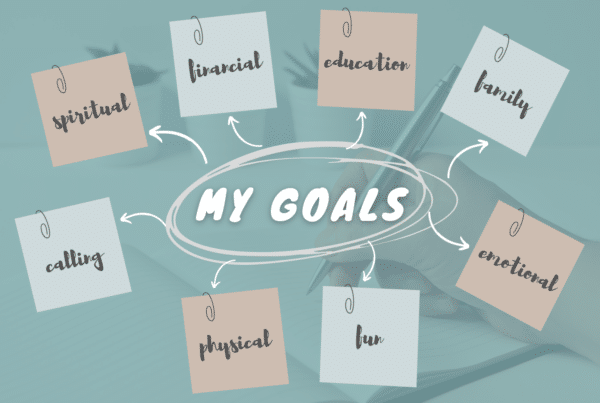Have you ever been in a store and came across an acquaintance? You chit-chat for a minute and then they turn towards your kids and try to have a conversation? Sometimes it is a quick exchange, and other times it is a painful interaction. Have you ever watched as your child stands there frozen, unsure of what to do. It was in one of the moments we realized we need to teach our kids how to interact with others, especially with someone that they don’t know.
This is a life skill for everyone. It is our job as parents to help our children be confident and willing to interact with others. Not only will this help them survive these awkward moments, but it will help prepare them for job interviews and life.
Eye Contact
This is kind of a lost art now that we have smartphones. So much of our interactions now are through the internet instead of face to face contact. But this doesn’t mean eye contact isn’t important, it just means we have to be more purposeful in teaching our children how to do it because they may not learn it otherwise.
When someone is talking with you it is important to make eye contact. Body language often speaks louder than the words you say. Making eye contact shows that you are listening and care about what the other person is saying. Here are some tips to teach your children.
- Try to make eye contact before you begin talking.
- Start by trying to make eye contact long enough to determine the color of the other person’s eyes.
- Goal is to make eye contact 50% of the time when you are talking and 70% of the time when you are listening.
- If direct eye contact is hard, rotate between looking at the person’s eyes and mouth and forehead.
- Practice making eye contact with your child. One way is to have them say their ABC’s while making eye contact. Make a goal to not break eye contact until letter H. Then increase the goal as it becomes easier. Reverse it and you say the ABC’s back to them as they practice eye contact while listening. This may feel weird, but it is a skill like any other and can be practiced.
Handshake
While COVID has removed handshakes from our culture, we still feel it is important to teach kids the proper handshake. You can teach them fist bumps now, since that might be the preferred method of greeting for a while. Helping your children know when a handshake, fist bump or hug is the most appropriate will help them overcome the initial awkwardness of greeting someone.
It is important that whichever interaction they choose, they do it with confidence and with the proper amount of force. Having a firm and steady handshake speaks confidence to the recipient and expresses your desire to interact with the other person. It is your connection with them, and you want it to be solid. Here are tips on how to give a proper handshake.
- Start by standing 3-4 feet away from the other person.
- Extend your right hand, thumb up, towards the person as you slightly lean forward. (Left hand if their right is injured.)
- Make sure the web part of your thumb connects with theirs. Then close your fingers around their hand firmly but not too tight.
- Pump your hands 2-3 times and then release their hand.
- Return to your 3-4 feet distance and continue the conversation.
- Practice walking up to each other and giving handshakes. To make it more realistic, you can also practice exchanging pleasantries.
Conversation
To get past the initial hello, children need to be taught how to have a conversation. Some kids will naturally do this well. At my son’s birthday party his 8 year old friend struck up a conversation with Nathan. This 2nd grader asked my husband how his day was and then asked, “How is your work going?” After Nathan answered, the boy followed up with “Your job must be hard.” This kid knew how to ask a question and respond to the answer-much better than a lot of adults! I’m sure some of this was natural and easy for him, but I would assume it had also been taught to him.
Here are some pointers for how to keep a conversation going:
- Don’t answer a question with just yes or no, respond with complete sentences.
- Offer a piece of information when you respond to a question. For example if someone asks, “Do you play sports? You can respond with, “Yes I do play sports. I play volleyball, basketball and track. Volleyball is my favorite.”
- As them a question after you answer theirs. You can use the same question they ask you when appropriate.
- Always end a conversation with a conclusion sentence such as “It was nice meeting you” or “See you next week.”
Expectations and Practice
Over the years we have helped our children come up with questions to ask kids and adults that they meet. Then we give them opportunities to practice these. Before a scheduled interaction, we coach them and remind them of what is expected- eye contact, handshake/fistbump and asking questions. At first we go with them and help coach them along. Quickly we move into the next stage where they do it on their own with us standing nearby. Then we have them fully do it on their own. Afterwards we ask follow-up questions and help them process through what went well and what they could do differently next time.
Once traveling becomes a thing again, hotel pools are the best place for practicing. Often there are other families hanging out at the pool. People are there that you don’t know and probably will never see again. Have your child go up and practice introducing themselves and asking the other child a few questions. If it goes well, they have another friend to play Marco Polo with and you can relax in the hot tub. If it ends awkwardly, well, they will never see the child again so it’s no big deal.
Time to Practice
We encourage our children to introduce themselves and then ask 2-3 questions. If the other child doesn’t respond or isn’t helping the conversation move along, they were released to excuse themselves and go play elsewhere. Here are some questions to choose from. For most situations you will have an introduction and 1-2 common ground questions. Then end the conversation with a closing statement and leave. The “invite them in” section is only appropriate to use in certain situations. For example, you would not use these questions if you meet someone in a store but you would on the playground.
Introduction:
- Ask: Hello, my name is ________. What is your name?
- Respond with: Nice to meet you (say their name).
Find common ground: (pick a couple) If they don’t ask a question in return it is okay to share your answer to the same question.
- What grade are you in? What school do you go to?
- Where do you live?
- What do you like to do after school?
- What sports (or instruments) do you play?
- Do you have any siblings?
Invite them in: (when appropriate ask them to join your group)
- We are going to go play kickball, would you like to join?
- We are going to eat lunch at the far table, would you like to eat with us?
- We are going to be a part of Christina’s small group, would you like to come check it out?
End the conversation:
- I have to go but it was nice to meet you (say their name).
- It was nice talking with you. Hopefully we see each other again.
- Thanks for playing. Next time you come feel free to join in.
How do you help your child feel comfortable engaging in a conversation with someone they don’t know? How do you help them overcome their anxiety and fear so that they feel equipped to meet others?








I love this! Definitely a needed skill these days! When we first started having kids, we were very intentional about wanting them to be able to talk to people. Whenever we would eat out, we always required that they place their order themselves and answer any follow up questions. After all, it’s their food! This was really helpful in them not being scared to talk to others. Our oldest two may have learned a little too well, because they never stop talking! 🙂 But, we’ve always had adults tell us how impressed they are that they can have a real conversation with our kids.
I love the practice of having them order their own food. We do the same thing!! I think it build confidence as they are able to clearly communicate what they want! Our youngest sounds like your boys. He likes to talk too!!